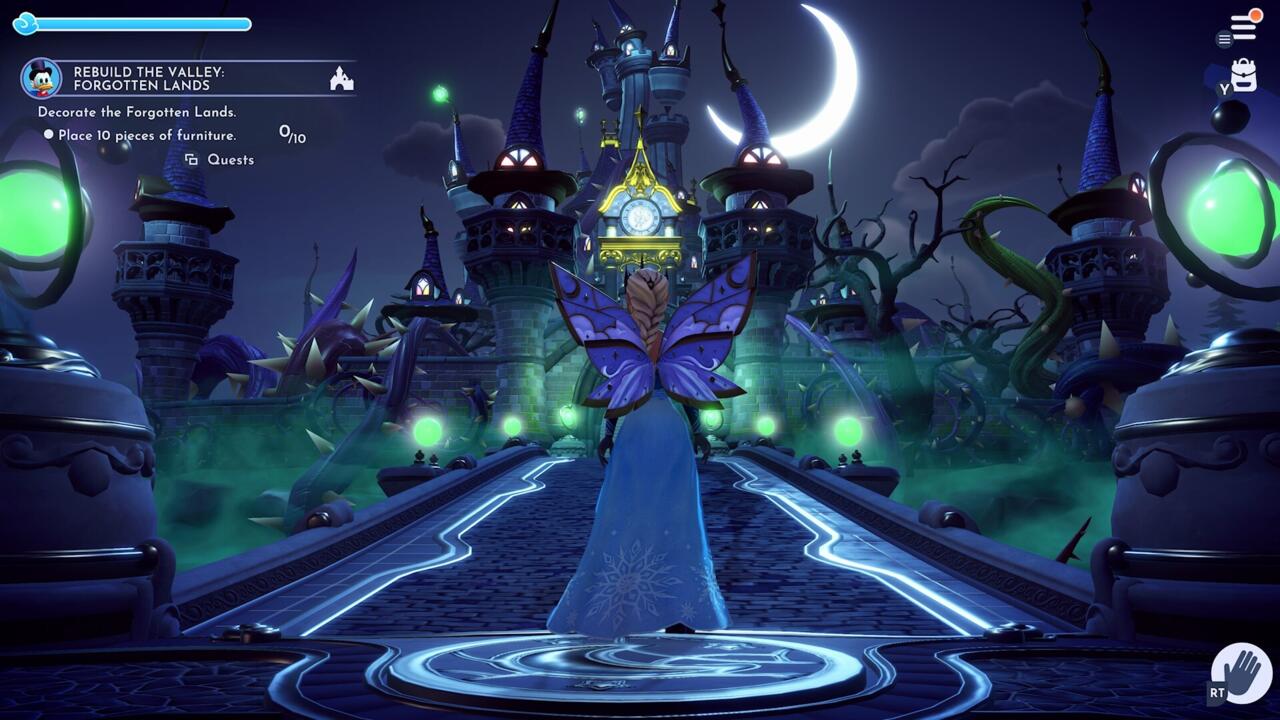Disney Dreamlight Valley entered early access in late 2022, and the Animal Crossing-meets-Mickey Mouse gameplay immediately appeared in my house. The light and easy gameplay with soft music and the presence of some of the world’s most family-friendly characters made for low-budget gaming sessions that served as a nice break from every criticism on my list.
Honestly, I did not expect much from the game. Animal Crossing never leaned heavily on its story, so I didn’t expect Disney’s Dreamlight Valley to do much more than Nintendo’s hit franchise. However, over the past year, the writers at Gameloft have not only exceeded that expectation, they’ve done so with a real, raw look at childhood, adulthood, and the transition between the two. It was a bold choice – and it definitely goes up against “Life Simulator starring Mickey Mouse and Friends” – but it’s a story I’ve thought about regularly since completing it.
SPOILERS for the first year of Disney Dreamlight Valley content follow, proceed with caution.
For those who don’t know the story, Disney’s Dreamlight Valley follows a hero who returns to the valley they created as a child after being away for years, only to find it ruined thanks to an event called the Oblivion. Houses fall apart, noxious vines grow everywhere, and the previous inhabitants are either lost or suffering from oblivion. Our return seems to awaken the latent magical abilities of our Dreamlight and from there we begin to restore the valley to its former glory.
The vines represent the darkness that has fallen over the valley, itself created by The Forgotten, a malevolent presence that corrupted the heathen world through unknown means. Through the writings, we learn more about the origins of this dark creature, before we finally meet the villain face-to-face – and they look surprisingly familiar. Herein lies the twist: the player-created hero and the Forgotten are one and the same, with the “evil” version representing the toddler’s transition from childhood to adulthood – and all the rambunctious teenage years in between.
This revelation is mostly given to us until the first meeting, but from then on the story really picks up. So much so, in fact, that the game issues a content warning before completing the game’s final missions: “Forgotten Memories quests deal with some difficult emotions and topics such as sadness, loneliness, and anger.” “If you are not in the right frame of mind to deal with these issues, return to your village until you feel ready to face them.”
Following the quest line, we return to the time when the “darkness” began to penetrate. We control the forgotten version of ourselves when we encounter familiar faces who ask us for familiar help: Mickey wants flowers for Minnie, Goofy wants to cook, etc. The choice of dialogue turns into negative emotions. While talking to our friends, our conversations are filled with intrusive thoughts like, “What’s the point of this?” or “I’ll just screw this up anyway.”
When we pack things for our friends, something is wrong: the flowers we find for Mickey are dead and the food for Goofy is rotten. When the Forgotten deliver the items to their friends and the reactions aren’t what they expect, the Forgotten immediately begin to descend into that anxiety because one of the dialogue options is “I just want to be alone.” while another simply “Oh! Oh! Oh!”
While these moments were passing over my children, I was engaging everyone. These feelings are familiar to many people growing from childhood to adulthood. Things they once loved lose their luster, tasks they once enjoyed seem menial and annoying. Self-doubt, anxiety, overreaction, and more are all part of the growing up process, and Disney’s Dreamlight Valley does a great job of showing that through. scenes.
Ultimately, instead of our own created personality, we are tasked with collecting the “hidden relics” of a forgotten past. A blanket, a shovel and a bucket, and a child’s drawing of a lion. We then travel to the Forgotten World, which is a dark and twisted version of a castle in the middle of a valley. The castle is completely engulfed in darkness, with vines growing through them and the walls and floors. When we reach the Forgotten, we are transported to a world of pure darkness, except for areas with spotlights above them.

Using the “relics” of the past, we can learn the truth: the forgotten, lost childhood of our character is revealed, as they say they bring darkness to the valley to “make sure no one passes through.” . [they] By bringing back the sacred areas of their past – the shovel and bucket in a sandbox, the blanket on their childhood bed, etc. – we convince them that the darkness is gone and the day has arrived.
The best part is what happens to the Forgotten after the final mission is over: they don’t disappear into the light, they don’t get imprisoned in a dark castle, they just become another villager. From there, a new quest line opens up where the player character and their forgotten childhood work together to make the valley a better place for everyone.
I didn’t expect such a whirlwind story in my cozy Mickey Mouse life sim, but Game Loft sneaked one of the best stories of the year right in between the trip to Scrooge’s shop and the interior decorating.






